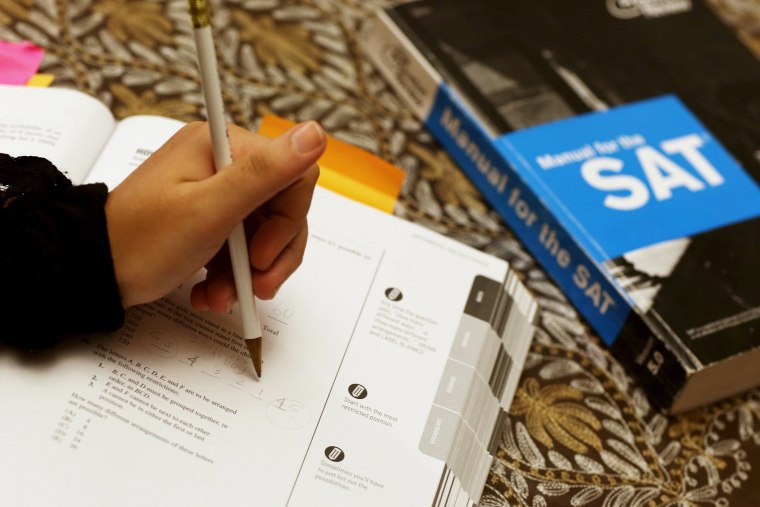Like many students whose standardized test scores got them into college, I liked the SAT. In my sophomore year, my mastery of the test got me a job tutoring high school students. After graduating in 1981, I started The Princeton Review.
My approach to test prep was simple: I excluded any subject that appeared infrequently on the SAT. Then I wrote software to analyze each student’s performance and help direct his efforts—I could exclude any concept that he or she had already mastered, or that he or she was unlikely to learn in under two months. In other words, my approach was about computer-aided focus.
Then I met Adam Robinson, a fellow tutor, who showed me how he taught his students to pick apart and successfully solve certain test questions. Between his techniques and my software, we could crack the test. And that’s when we realized the whole thing was a scam.
The College Board originally marketed the SAT as an IQ, or aptitude, test. But Adam and I worked with many very smart students with weak test scores; somehow, their math and English skills just weren’t translating into success on this particular test. The more we looked, the less the test seemed to have anything to do with a high school curriculum or anything that would help you perform well in college. In the end, the SAT was a mediocre test of middle school skills with a layer of gamesmanship that advantaged certain kinds of thinking over others. The other college entrance test, the ACT, made fewer absurd claims and measured a reasonable high school curriculum better, but it too was limited.
Since then, I’ve assumed that the SAT and ACT would simply disappear as people realized just how useless they were. Yet 30 years later, we still rely on them. The College Board and ACT add over $500 million a year to the cost of applying to college. They pay their CEOs high, six-figure sums and generate $100 million in profits annually. Since the utility of the tests is largely limited to the 800,000 high-achieving students headed to selective schools, these organizations are costing each one of those students a $1,200 fee—and that’s before the additional expense of test prep.
These organizations continue to exist because they themselves are not held accountable for good college matches (32% of college freshmen will end up transferring and 41% will drop out) or for the expense and stress they manufacture. And because there is no way to judge them, people are inclined to believe The College Board when it makes breathless announcements about changes to the SAT that will supposedly make them more relevant and useful.
We need a new organization to oversee college admissions testing, and we could do it for far less than a half billion dollars, while making the entire process less stressful. This organization should neither administer nor profit from tests; it should only be a coordinating body. It should structure the testing system in a way that guides students into the right colleges and increases graduation rates. The organization must be accountable, and should be measured by how much it improves outcomes for students.
This coordinating body should encourage companies to develop many curricula, each of which comes with its own test. Curricula should drive the test, not the other way around—after all, the goal of college admissions tests should be to assess how a student will perform in college, as well as whether that student learned a subject meaningfully. In turn, high schools need the freedom to choose which curriculum they believe is best, considering quality and cost.
College-bound high school students should choose the subjects they find most compelling and take the tests that demonstrate their interests and strengths. Colleges could look at a student’s scores on a few of these tests, perhaps three, and get a good sense of that student. We already have a strong model for this in the Advanced Placement (AP) program, where schools decide whether they want to use the curriculum and students decide which subjects to take.
We spend a tremendous amount of money on college admission testing. In return, we get a bland, uninteresting curriculum and a very weak prediction of freshman year grades. And with the introduction of the Common Core, we are now rebuilding K-12 education on the same foundation of worthless testing.
Since tests will inevitably steer how teachers teach, we should only administer tests that encourage passion and excellence in learning. It’s not too late to rethink how we test students and to create an accountability system that is, itself, accountable. Breaking up with the SAT and the ACT might feel like ending a bad relationship: unthinkable, then painful, until finally you can’t remember why you stayed for as long as you did. Your mother was right when she said there were plenty of fish in the sea. There are a lot of smart people out there who can help us get over the College Board.
John Katzman is an education entrepreneur and the founder of Noodle Education, 2U and The Princeton Review.
